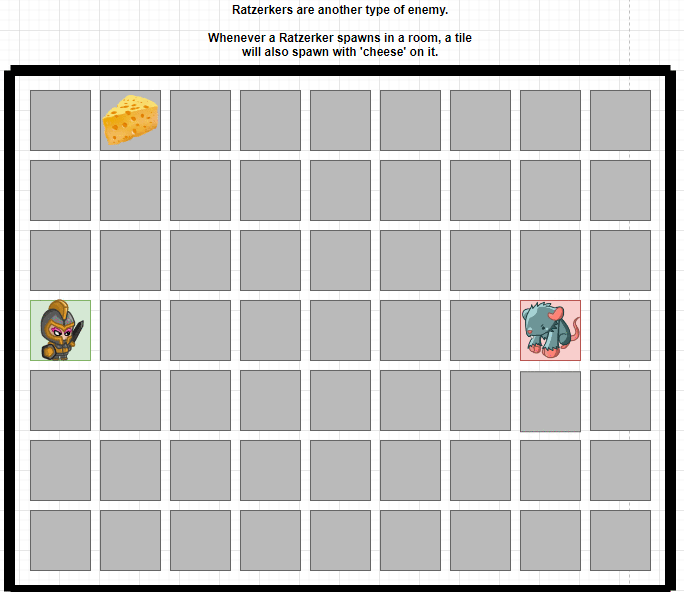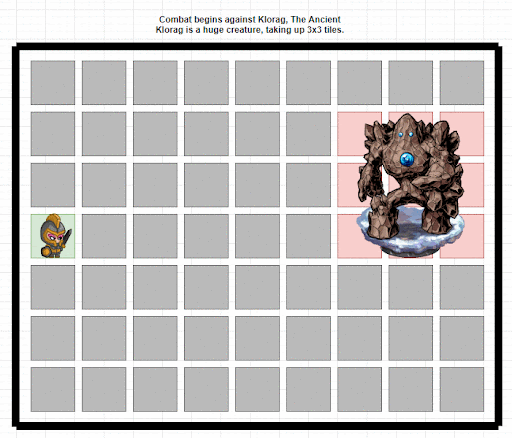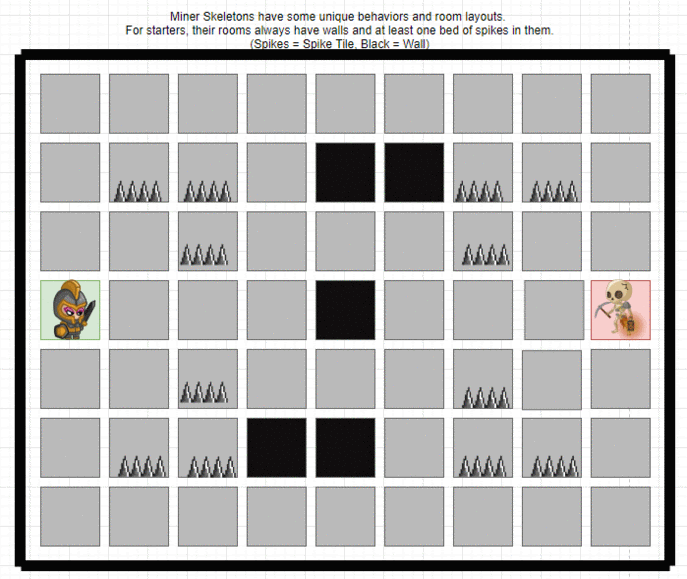Under Kladdenheim was the first long-term project I've worked on.



Some screenshots of the demo and the folder containing all the demo screens

Under Kladdenheim is a deckbuilder dungeon crawling roguelite, which innovates by combining traditional deckbuilder elements with a movement based grid, similar to a tactics game.
My role on Under Kladdenheim was, initially, as a sole designer on the project with three programmers and an artist. I was assigned the role of defining how we turned the concept of a "Game where you use cards to defeat enemies" into a game. Having no base to work with proved an excellent challenge for my designing skills, and I took the opportunity to put together a paper prototype for the project.
This prototype would end up completely defining the game, as we now had an end goal to work towards. I took on a heavy role in the production of this project from then on, guiding the Programmers towards the creation of a suitable framework from which to develop the game on, as the layered design approach would be critical to the development of a mechanically complex project.
This prototype functioned as several Draw.Io diagrams with information that I would Livestream to my other team members, and several screens that I would conceal to myself, which I could use to "load" enemies and rooms into the game. This effectively allowed my team to play the game as a board game, with me as the proverbial Dungeon Master. I could quickly load in new 'screens' and new hands of cards to simulate gameplay.
Much of the early design takes heavy inspiration from Slay the Spire, the game which brought the Deckbuilder genre out of obscurity, utilizing several innovations by that game, including the re-shuffling deck and simplistic card design.
After our initial paper prototype which got our team excited, I worked on looking into designing potential enemies and mechanics for cards. This would end up centering much of the gameplay around our unique selling point, the movement grid, as I outlined cards which could manipulate the environment and position of the player and foes, whilst designing enemies which could take advantage of positioning.
Enemies such as the Ratzerker, Skeleton Miner and Klo'rag emerged during this time, as enemies who all had unique interactions with the movement grid. Images shown here were prototype images I developed to showcase to my team the behaviors on how these enemies functioned in game. These enemies exist in the game today!



Here's some prototype enemy diagrams I made during early development. All three of these enemies are in the game!
I worked very closely with my programmers, where we mutually benefited each other. I would direct them on how certain aspects of the game needed to functions, while they would teach me how the game worked and how I could edit it using their custom-made tools. I learned a lot from this experience, especially with regards to how these kinds of games are built.
Developer tools were an early request I made, which ended up greatly shaping the project's design to being extremely modular. I have to thank my fantastic programmers for their ingenuity in coming up with these things, as without it, we likely wouldn't of even been able to finish the project.
Shown are some of their creations which I used extensively during the creation of enemies, cards and floor layouts. Another tool which I requested was the ability to create "AI Trees" for enemies, which would allow for the creation of enemies who can react to specific circumstances the player has created.


Here's some in-engine screenshots of some of our devtools. I worked closely with programmers to outline the usecase and abilities of the tools.

The finalized game in all it's Amateur Glory
Towards the midpoint of the project, I transitioned into a Lead Designer role, as we had two Designers from other teams join up into ours. I was tasked with bringing them up to speed on the project, which was done through combined design sessions.
Overall this project taught me a lot about the design and iteration process. The initial game was slated to be much larger, though due to a number of unfortunate outside of class incidents and problems adjusting to a new version control system, the scope had to be massively reeled in. It also revealed to me the importance of scheduling. Towards the end of the development cycle, we avoided using scheduling tools. This likely caused a lot of confusion for some team members, as they stopped looking for what they could do next and instead worked on something unecessary or since deprecated. Overlapping work schedules and the differences in avaliability also certainly didn't help late into the project's development.
While I have some regrets in the postmortem of the title, Overall I think it succeeded in what I wanted out of the project. I wanted to make something innovative and unique for a student project. What ultimately came to be is a fairly interesting little vertical slice of what could be a much more deep and expansive title. It's a game and concept I'd love to return to one day, as I'm a huge fan of all things tabletop and card game related.
The title proved a huge learning experience for me as a designer, Hopefully this was at least a semi-interesting read :)

